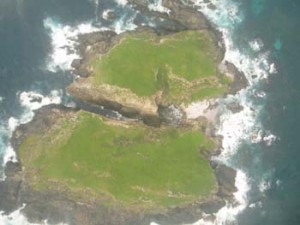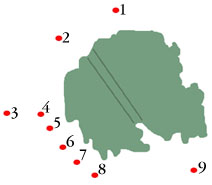Split Solitary Island
If it’s coral bottom cover and invertebrate life that you’re after, then Split Solitary is the place for you. The island lies 4 miles north of the harbour.
Shrimp Mooring, Cowry Mooring, Moray Mooring, Lobster Lair, Mike’s mooring and the Wall & Kingfisher Point
These dive sites are all on the south side of the island along an irregular drop-off. This marks the edge of a plateau about 10 meters deep running out from the island. At the foot of the drop, 15 to 18 meters down, the bottom is flat, slowly becoming deeper with occasional rock outcrops. On the plateau and along the drop-off the bottom is covered with hard and soft corals, sponges, ascidians, bryozoans, tube worms, algae’s and nudibranch’s. Also you will discover many species of resident fish, egg cowries, moray eels, banded coral shrimp, etc
Turtle Cove
On the southern side of Split Solitary Island is Turtle Cove, a mooring lying on the eastern edge of a gutter full of life. The gutter starts in deep water and passes all the way along the edge of the island. Turtles, Nudibranchs and abundant fish are highlights to this area.
Cod Rock
Lies on the south-east side of the island opposite the “split”. This bommie is seperated from the fringing plateau by a gutter around 18 meters deep. This bommie rises to about 14 meters and then drops away to 21 meters. A large black cod around 2 meters long has been sighted here on several occasions, also blue devil fish are common hiding under overhangs. There is a second bommie just to the north which is always covered in red morwong.
Coral Corner
Located on the north western corner where the bottom is in general flatter than the other sites. Here we have kelp beds and profuse growths of plate coral growing only a few meters apart. The underwater terrain is shaped like a series of bays separated by rocky headlands in 10 to 15 meters of water. The bays are covered in corals while the headlands are covered by other invertebrate life. Out in deeper water (18 meters) there are kelp beds which seem to attract turtles who are frequently seen sleeping in the shallows.




